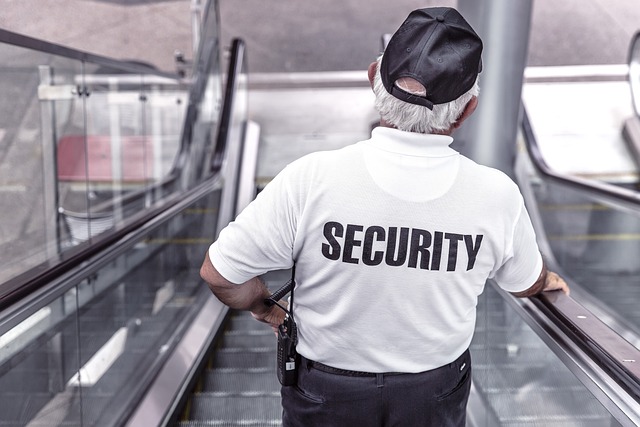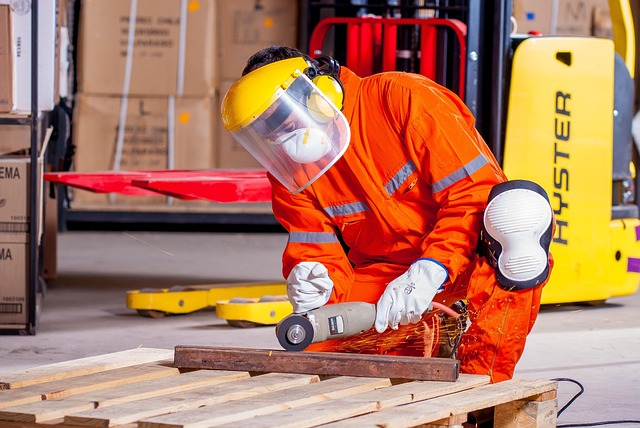In today's digital era, securing sensitive spaces relies heavily on thorough background checks for security personnel. These checks verify credentials, employment history, and potential risks, ensuring organizations hire trustworthy guards. Key elements include detailed verification, local compliance, past assignment assessments, and education/training record validation. Technology streamlines these processes through automated systems and AI algorithms, enhancing security industry compliance and real-time data access. Regular updates and re-verification are crucial to maintain reliable security personnel and mitigate risks. Meticulous screening practices protect sensitive environments and hold security guards accountable.
In today’s world, ensuring safety through robust security background checks is paramount. As security guards play a vital role in protecting sensitive spaces, understanding and implementing comprehensive screening processes is essential. This article delves into the significance of security guard background screening, outlining key components, legal considerations, best practices for premises protection checks, and the pivotal role of technology in streamlining safety personnel verification. By embracing these strategies, we enhance security industry compliance and maintain a robust security workforce.
- Understanding the Importance of Security Background Checks
- Key Components of a Comprehensive Guard Background Screening Process
- The Role of Technology in Streamlining Safety Personnel Verification
- Legal and Compliance Considerations for Security Industry
- Best Practices for Conducting Premises Protection Checks
- Continuous Evaluation: Ensuring Quality in Security Workforce Screening
Understanding the Importance of Security Background Checks

In today’s digital era, ensuring safety and securing sensitive spaces has become more complex than ever before. Background checks for security personnel play a pivotal role in mitigating risks and upholding the highest standards of protection. Security guard background screening is an indispensable process that verifies the credentials, employment history, and any potential red flags associated with individuals tasked with safeguarding our premises. By implementing robust security industry compliance measures through thorough checks, organisations can mitigate the risk of hiring unvetted individuals who may pose a threat to the safety of personnel and property.
The significance of these checks cannot be overstated, especially for safety officers whose responsibilities encompass critical tasks such as monitoring access points, responding to emergencies, and maintaining order. Premises protection checks ensure that those entrusted with safeguarding our spaces are reliable, trustworthy, and free from any criminal or dangerous affiliations. This meticulous screening process helps in building a security workforce that is not only skilled but also unwavering in their commitment to safety, fostering an environment of confidence and peace of mind for all concerned.
Key Components of a Comprehensive Guard Background Screening Process

A comprehensive background check for security personnel is an indispensable tool in ensuring the safety and security of people and property. The process involves several key components that collectively verify the suitability, reliability, and integrity of potential or current guards. These include thorough safety personnel verification, which delves into an individual’s history to uncover any red flags related to criminal activities, substance abuse, or prior employment issues that could compromise their ability to uphold security protocols.
Moreover, a robust security guard background screening program incorporates security industry compliance checks, ensuring guards are licensed and certified as required by local regulations. Premises protection checks are also vital, examining the candidate’s past assignments and performance records to gauge their aptitude for handling different security scenarios. Additionally, verifying safety officer credentials involves cross-referencing educational qualifications, training certificates, and any specialized certifications relevant to the role, further bolstering the guard’s suitability for the position.
The Role of Technology in Streamlining Safety Personnel Verification

Technology plays a pivotal role in streamlining safety personnel verification processes. Advanced background check systems utilize digital databases and AI-driven algorithms to conduct thorough screenings, ensuring that security guards and other safety officers meet the required standards. These platforms automate repetitive tasks like identity verification, criminal record checks, and past employment evaluations, significantly reducing the time and resources needed for manual screening.
By integrating technology into security background checks, organizations can enhance their compliance with industry regulations. Digital solutions enable more efficient premises protection checks by providing real-time access to up-to-date information on potential employees. This ensures that only qualified and trustworthy individuals are granted access to sensitive areas, thereby bolstering the overall safety of facilities and personnel.
Legal and Compliance Considerations for Security Industry

In the security industry, ensuring legal and compliance considerations is paramount to safeguard individuals, properties, and sensitive information. Background checks for security personnel, also known as security guard background screening, are a critical component of this process. These checks go beyond basic verification of identity and credentials (safety officer credentials) to uncover potential risks or red flags that could compromise the safety of premises protection. Employers in this sector must adhere to stringent regulations related to security industry compliance, which often involve comprehensive security workforce screening practices.
Premises protection checks are not just about avoiding hiring individuals with a history of criminal activity; they also encompass verifying educational backgrounds, previous employment records, and references. The goal is to create a robust security team by ensuring that every safety personnel has the right skills, qualifications, and integrity to fulfill their duties effectively. Regular updates on these checks are necessary due to the dynamic nature of personal and professional lives, thus maintaining the highest standards of safety and compliance within the security workforce.
Best Practices for Conducting Premises Protection Checks

When conducting premises protection checks, it’s crucial to follow best practices that ensure thorough and effective security guard background screening. This involves verifying the safety officer credentials through multiple channels, including cross-referencing employment records, checking references, and conducting criminal background checks using reliable databases. A comprehensive approach should also include education and certification verification, ensuring that guards possess the necessary skills and knowledge for their roles.
Compliance with industry standards is paramount in maintaining a secure environment. Regular updates to security protocols and staying informed about relevant laws and regulations are essential. Additionally, establishing a robust internal screening process, which includes random drug testing and ongoing performance evaluations, can help maintain a reliable security workforce. These practices collectively contribute to the overall safety of the premises by minimizing potential risks associated with unqualified or dishonest personnel.
Continuous Evaluation: Ensuring Quality in Security Workforce Screening

In the dynamic landscape of security operations, continuous evaluation is paramount to maintaining robust safety protocols. Background checks for security personnel are not one-time events but ongoing processes that require regular updates and re-verification. This ensures that those tasked with premises protection remain reliable, credible, and in compliance with industry standards. By implementing rigorous security guard background screening practices, organizations can mitigate risks associated with compromised or unqualified staff, enhancing overall safety and security.
Security industry compliance demands a meticulous approach to safety personnel verification. Every security officer’s credentials must be meticulously scrutinized to ensure they meet the necessary criteria for their assigned roles. This involves periodic re-evaluation of relevant records, including educational qualifications, employment history, and any past or current certifications. Such proactive measures not only safeguard sensitive environments but also foster a culture of accountability within the security workforce screening process.
